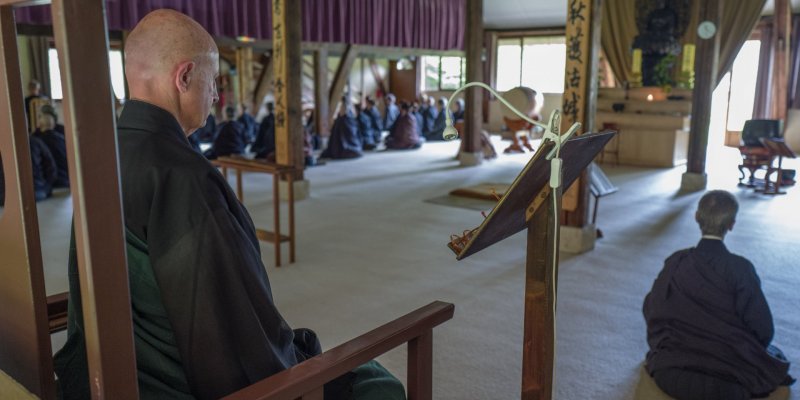Frequently asked questions

Réponses à quelques questions fréquemment posées sur la pratique et notamment sur zazen, la méditation zen. Par maître Laure Hosetsu Scemama.
What should I wear in the dojo?
Traditional clothing for the layperson is black kimono. With the kimono we can cross our legs comfortably and breathe freely. Black is a colour that does not disturb concentration. In the beginning, you can wear comfortable clothing, preferably dark or neutral colours.
How do I get into the posture if I’m not very flexible?
In the beginning, we may encounter problems crossing our legs in the lotus or half-lotus, or positioning the knees so that they touch the floor. But, generally, this gets better the more we practice. If your problems are related to age or illness and you really cannot get into the posture, there are ways around it, such as doing zazen in a chair. In each case, you should ask the person in charge and they will advise you.
After a while, I get pins and needles in my legs. Should I be worried?
Don’t worry: it is not painful and there is no danger. If you have problems getting up at the end of zazen, get up slowly and use the zafu to help you: press it back into shape keeping your legs stretched, and the circulation will return to your legs.
I find it really hard to concentrate and I’m stressed and agitated. Will zazen practice help me to relax?
Zazen will certainly help you concentrate and find peace. However, it is not a method of relaxation, nor a technique for your well-being, not is it personal development. The way of Buddha is a spiritual path of great profundity that goes well beyond oneself. If you practise without a goal, without looking for personal gain, then you can find true and profound peace of mind and be in harmony with all things.
How should I manage my thoughts and emotions during zazen?
This is the very practice itself. If you are very focused each moment of zazen, unifying the body and mind through concentration on your posture and breathing, letting your thoughts and emotions pass by; if you do not pursue your thoughts and emotions or run away from them; if you consider them as having no importance and do not identify with them, then you will eventually forget yourself. Thoughts and emotions subside, confusion is dispelled and the mind becomes clear and peaceful.
This does not mean that you no longer have any emotion or reaction to the phenomena of life. If you learn how, through zazen practice, not to run away from all that comes up in your mind, not to run away from all the phenomena and circumstances of your life, then you can accept all that happens without being overwhelmed by it and you will attain real freedom.
Can I practise by myself at home?
During zazen, you are completely alone with yourself, but at the same time you are in close interdependence with all existences. Practising this interdependency, harmonising with others, is an integral part of Mahayana Buddhist practice. The presence of others in the dojo, their focus and energy, helps you in your practice.
Additionally, Zen is a transmission from master to disciple, from person to person. This connection with a teacher, a good friend that can guide you on the Way, is essential. The teacher can help you to see your errors, to go beyond your fears, your doubts and obstacles… The practice then becomes a living and dynamic reality.
But, if you live far from a place of practice, you can do zazen at home and come occasionally to a sesshin where you can meet a teacher. Without this connection, the practice is only an illusion.
